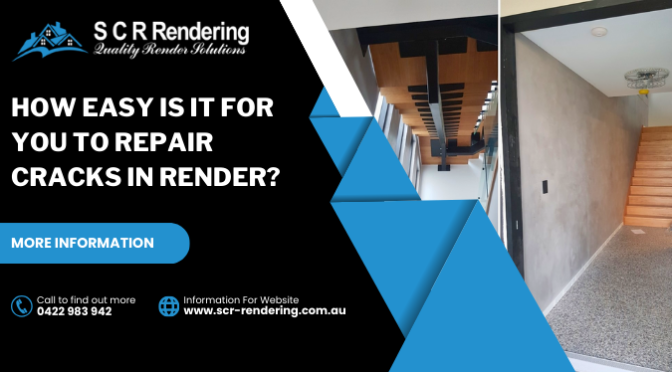When it comes to fine-tuning your building and keeping its structure durable in the long run, rendering is a method that is often opted for. In other words, it is a popular option for exterior wall finishes. But there can also be cracks in it, which can be a major threat to the overall structure of your building. These cracks develop over time and are not only meant to compromise a building’s integrity but also to detract from its aesthetics.
If you are dealing with good professionals for cement rendering, they may tell you about the cracks at the very time of performing the rendering job on your property. You may also count on them for the best repair of the cracks. But before you call them and get started, you should be aware of the kinds of render cracks your building can have. Below are the types you should take into consideration before making a move:
Hairline Cracks
Hairline cracks are considered the most common type of render crack. They can be referred to as thin, shallow cracks and are less than 1mm in width. They are unlikely to pose any significant structural concerns. But you can expect them to allow water to cause harm to the render, which can undoubtedly lead to bigger damage if you don’t treat them at the right time.
Structural Cracks
Structural cracks exceed 1mm, which means that they are wider and deeper than hairline cracks. If you see these cracks in your building, you may understand that there are certain underlying defects that have already started to take place. This undoubtedly needs immediate attention and treatment.
Pattern Cracks
Pattern cracks, which can also be referred to as map cracks, are a series of interconnected cracks you may find in your building. If you are already experiencing these cracks on site, you should know that they have started taking place due to movement within the building or improper building rendering. There is a combination of techniques that you need to use to repair map or pattern cracks. So, it’s better for you to hire experts for the job.
How to Assess the Damage
Before getting started with the repair process, make sure that you assess the damage in order to understand its severity. Once you know it, you can then incorporate the right tools and techniques for the repair.
Consider examining the affected area thoroughly and closely observing the shape, size, and pattern of the cracks.
Consider using a small tool, like a scraper or screwdriver, in order to probe the cracks in your building and check if there are any underlying issues within the structure.
Note the characteristics and locations of the types of cracks in your building and, accordingly, plan the repair using the right techniques.
Tools and Materials Required for Treating Render Cracks
To repair the render cracks in your building, you will need the following tools and materials:
Tools
- Chisel
- Trowel
- Wire brush
- Paintbrush
- Hammer
- Sandpaper
- Scraper
- Protective gear
Materials
- Polymer-modified render adhesive
- Paint or tint
- Render mix
- Bonding primer
- Crack repair mortar or filler
To give your building the best protection and appearance by repairing the render cracks in it, you must hire professionals. Their techniques can undoubtedly help you get the best results from the task. They work responsibly and are meant to pull off such a job with perfection. So, hire them and get started without wasting any more time!
Get in Touch with SCR Rendering Brisbane Today for Premium Concrete Rendering!
We at SCR Rendering Brisbane not only perform concrete rendering with perfection but can also easily and quickly repair render cracks to keep your building safe and in pristine condition. So, get in touch with us and get started! Call us now at 0422 983 942.



